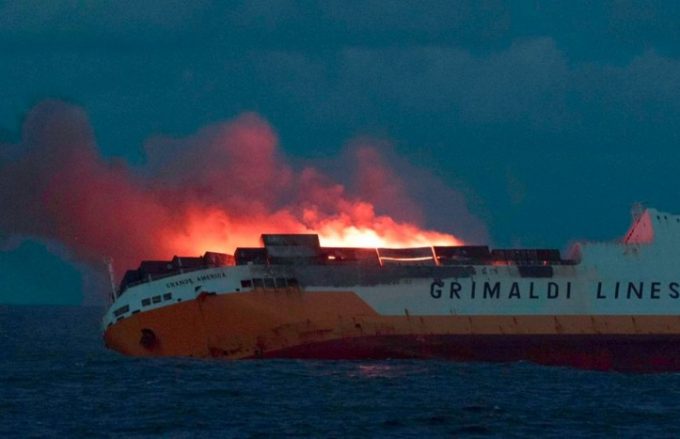Transpacific sees first major MSC blanks as rates fall and volumes falter
Following nine weeks of consecutive declines in spot freight rates on the transpacific, carriers are ...

Lithium-ion (li-ion) battery fires on board containerships have already claimed a couple of high-profile victims, the X-Press Pearl and perhaps the Maersk Honam.
Less well understood, but still a great threat, is the risk posed by electric vehicles (EVs), which are stacked full of li-ion batteries, to car carriers, or the risks involved in the carriage of used EVs on ro-pax vessels.
The loss of the Felicity Ace in the Atlantic last year could well be a wake-up call to potential hazards ...
Trump tariffs see hundreds of cancelled container bookings a day from Asia
'To ship or not to ship', the question for US importers amid tariff uncertainty
'Chaos after chaos' coming from de minimis changes and more tariffs
Forto 'sharpens commercial priorities' as it lays off one-third of staff
List of blanked transpac sailings grows as trade war heats up and demand cools
EC approves DSV takeover of DB Schenker
Overcapacity looms for ocean trades – with more blanked sailings inevitable
'Disastrous' DSV-Schenker merger would 'disrupt European haulage market'
Amazon Air’s metamorphosis: 'a different air cargo unit from two years ago'
Shippers in Asia restart ocean shipment bookings – but not from China
India withdraws access for Bangladesh transhipments, in 'very harmful' decision
'Tariff hell' leaves industries in limbo – 'not a great environment to plan'

Comment on this article